Committed to advancing both renewable energy technology deployment and energy efficiency at-large, the state of Colorado has in many ways been a pioneer in the widespread adoption of energy-saving solutions. Home to the National Renewable Energy Laboratory (NREL), the Rocky Mountain Institute (RMI) and several other sustainability focused organizations, Colorado has maintained its leadership in “walking the walk” of green building, and constantly striving to do more to reduce carbon emissions.
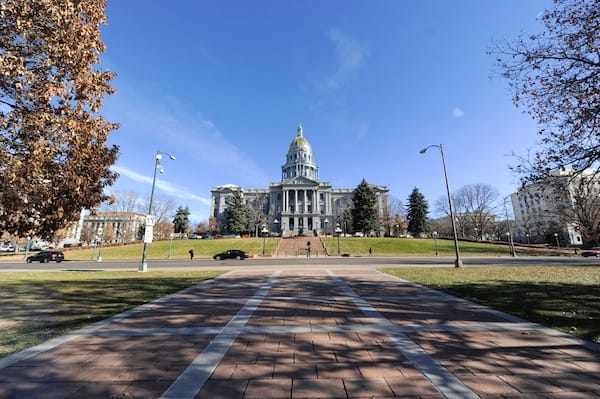
This effort has been reflected in the retrofitting of several state buildings—including historic landmarks constructed in the late 1800s and early 1900s—with cutting-edge technologies that have elevated them to becoming the most energy efficient of their kind in the U.S. One of Colorado’s first efforts—the installation of a geothermal HVAC system at the Governor’s Residence in Denver, resulted in the reduction of natural gas usage by 50 percent and electricity consumption by 15%.
The success of this project has paved the way for many other energy efficiency projects across the state, most recently the Colorado Capitol Complex in Denver. Originally constructed from the late 1800s to early 1900s, the complex was slated for a major renovation and restoration by the Colorado Department of Personnel and Administration (DPA) in 2003, including to its antiquated mechanical system.
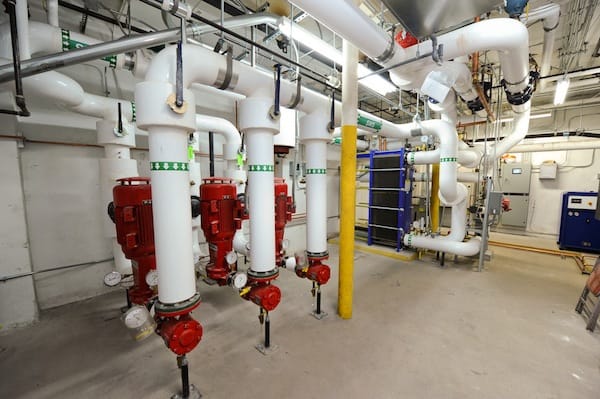
“Some of the HVAC infrastructure in the complex was more than 80 years old, and the system at-large was generally overdue for an upgrade,” said Lance Shepherd, manager of design and construction programs for the DPA’s Office of the State Architect. According to Shepherd, the state also aimed to notably increase the energy efficiency of the complex’s buildings, while also incorporating the use of renewable energy solutions.
“Under the Renewable Portfolio Standard (RPS), Colorado is requiring the use of 30% renewable energy deployment by 2020,” Shepherd said. “The mechanical system upgrade portion of the building’s restoration needed to reflect this as well.”
Shepherd and his team at the DPA worked with Opterra Energy Services (OES), previously known as Chevron Energy Solutions, to develop a multi-phase program of approximately $30 million in upgrades and improvements. In addition to the HVAC system updates, this also includes energy-efficient lighting systems, energy management systems, water conservation measures, building envelope retrofits, removal of outdated equipment, and asbestos abatement.
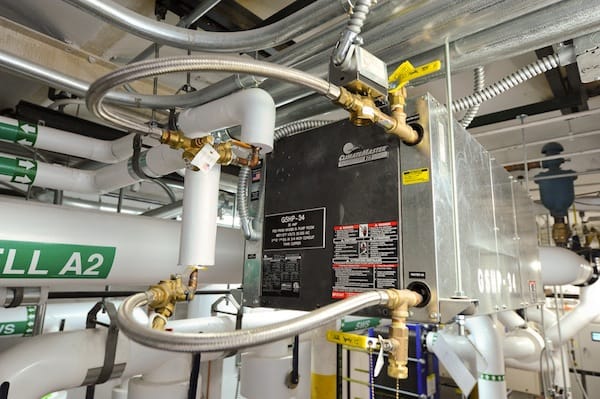
These updates were applied across the Colorado Capitol Complex, including the Governor’s Residence, Colorado Dept. of Revenue building, and the State Capitol building.
For the State Capitol building, the team designed a hybrid mechanical system that uses more than 200-ton geothermal heat pump system to replace the existing air handling system and supply heating and cooling throughout the building. Another project installed a 10 kW solar PV system to provide electric power to the Capitol.
The State Capitol building’s new, state-of-the-art HVAC system design specified a total of 9 water-to-air and water-to-water heat pump units from ClimateMaster, including three (1.5- to 5-ton) horizontal and vertical Tranquility® 16 Compact (TC) Series units, four (3- to 5-ton) horizontal and vertical Tranquility® 30 Two-Stage (TT) Series units and two (3- to 15- ton) Tranquility® Modular Water to Water (TMW) Series units, all with environmentally sound EarthPure HFC-410A refrigerant. Working within the new mechanical design at-large, these ClimateMaster heat pumps contribute to the overall system that provides heating and cooling throughout the building, including in the delivery of air conditioning to its House and Senate Chambers for the first time in the building’s history.
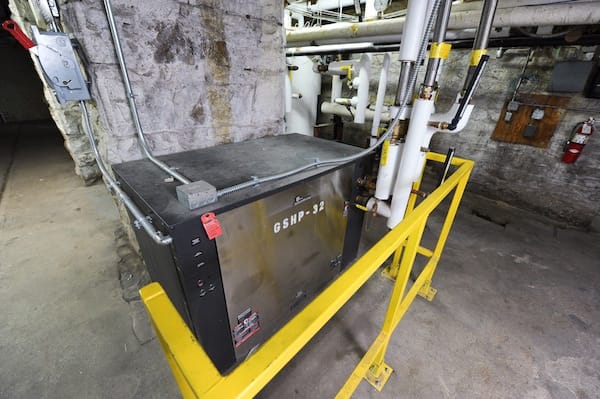
To complete the system, the network of heat pumps is integrated with an open-loop geothermal well system that utilizes water from the Arapahoe Aquifer located approximately 900 feet below the State Capitol building.
The first phase of the new mechanical system’s installation began in the fall of 2010, when 900-foot supply and return boreholes were drilled into the aquifer. Water (moving through stainless steel piping set in the boreholes) is designed to be pumped between the building and the aquifer at about 350 gallons per minute at maximum flow.
“The ground side of the geothermal system pumps water drawn from the underground aquifer, piping it up through a heat exchanger and then returning it back to the aquifer,” said Lou Grounds, sales engineer for Ace Mechanical Equipment, which supplied the heat pump units for the project. “This results in providing consistent indoor temperatures of 65 degrees through the HVAC system by either heating the source water — which is coming from the building — in the winter, or cooling it in the summer.”
Once drilling was complete, OES installed the high-efficiency heat pump units throughout the State Capitol building, which replaced existing split units and other outdated HVAC equipment. A new pumping system was also installed in the building’s sub-basement area to serve the network of heat pumps.
According to Grounds, the ClimateMaster heat pump units were installed quickly and seamlessly, even when considering some of the retrofit challenges of the project.
“When you’re negotiating historic spaces, especially with newer equipment, it’s not always a guarantee that things will go smoothly,” Grounds said. “The ClimateMaster units were extremely easy to install, and were tested and up and running very quickly.”
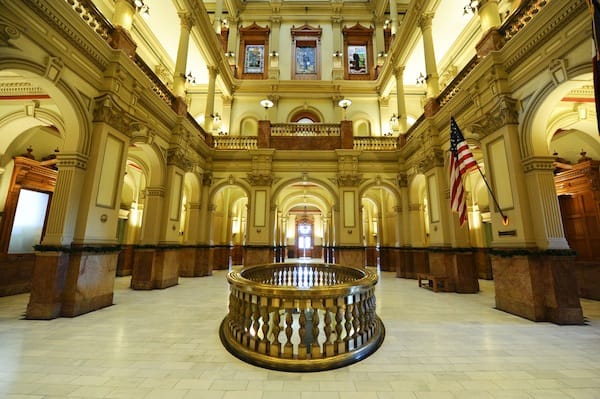
From submittal preparation, review and approval through installation and startup, the project timeline totaled approximately 12 months, and continued even during the state’s legislative sessions. In addition to being one of only a few such structures to incorporate geothermal heating and cooling, the State Capitol building was successful in securing LEED® for Existing Buildings (LEED-EB) certification from the U.S. Green Building Council (USGBC), making it the first LEED-certified state capitol in the country as well as the first facility to receive the LEED-EB certification at-large.
Total project costs were calculated at $6 million, with $4.6 million coming from a U.S. Department of Energy (DOE) grant under the American Reinvestment and Recovery Act. The state funded the remaining $1.4 million through certificates of participation and a lease-purchase agreement with Chevron Energy Solutions.
Since coming online in the summer of 2013, the new geothermal heat pump system has generated substantial savings for the state of Colorado. In the first year of operation, $95,000 in utility bill savings were achieved, and savings are estimated to increase at about a 3-percent annual uptick to $165,000 per year by 2029. Payback on the state’s investment in the Colorado Capitol Complex project at-large is estimated to be 19 years, with a return on investment for the State Capitol building’s geothermal system itself calculated at 10 years.
Beyond serving as an example for achieving notable government overhead cost reductions, the project speaks to the viability of geothermal energy as a retrofit solution in landmark and historic buildings, even those located in dense urban settings.
According to former Colorado Governor Bill Ritter, who is the current director of the Center for the New Energy Economy at Colorado State University, the Capitol project highlighted the “significant potential” for making use of geothermal energy in Colorado.
“By tapping into the steady temperatures below the earth’s surface, we were able to heat and cool the capitol building with a reliable and clean source of renewable energy at a reduced cost to the people of Colorado,” said Ritter.
Added Jeff Holland, owner of Ace Mechanical Equipment, “This project is a terrific example of how ClimateMaster geothermal heat pump equipment can help engineers and owners convert a historic, high-profile building with an old, antiquated HVAC system into a modern, high-efficiency, comfortably-conditioned building – while achieving LEED points in the process.”




Join the conversation: